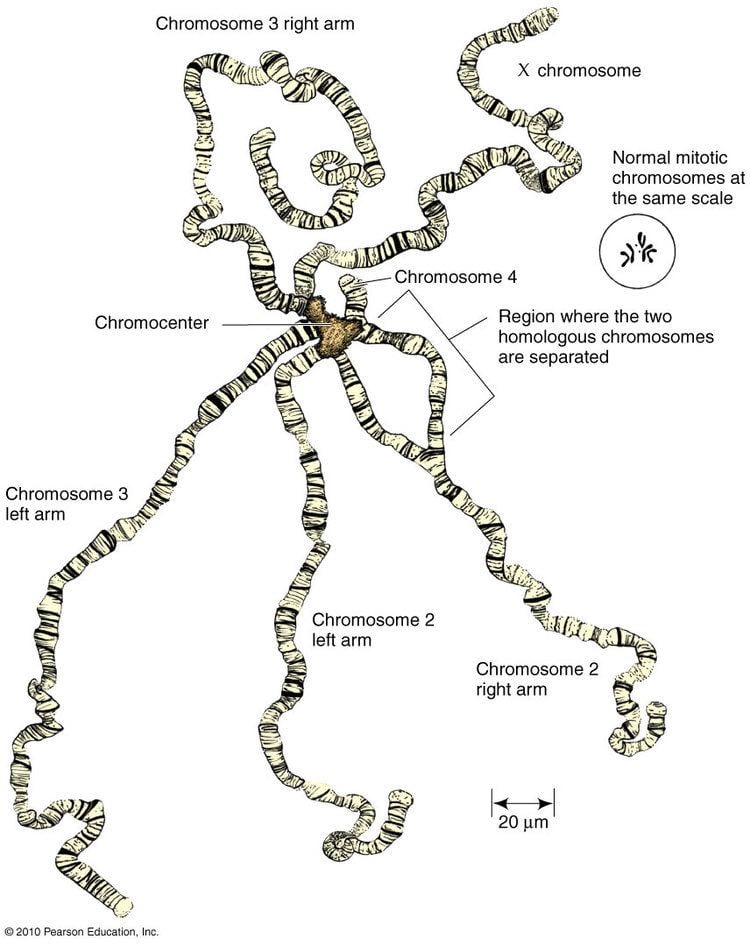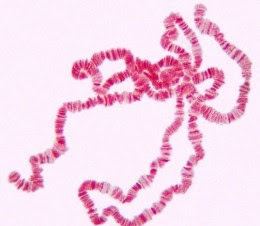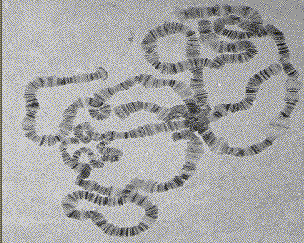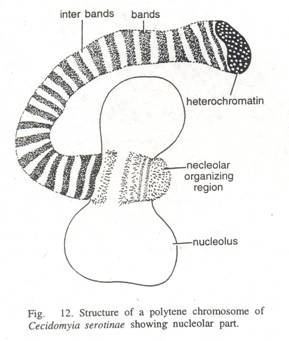 | ||
Polytene chromosomes
Polytene chromosomes are oversized chromosomes which have developed from standard chromosomes and are commonly found in the salivary glands of Drosophila melanogaster. Specialized cells undergo repeated rounds of DNA replication without cell division (endomitosis), to increase cell volume, forming a giant polytene chromosome. Polytene chromosomes form when multiple rounds of replication produce many sister chromatids that remain fused together.
Contents
genetics polytene chromosomes
Function

In addition to increasing the volume of the cells' nuclei and causing cell expansion, polytene cells may also have a metabolic advantage as multiple copies of genes permits a high level of gene expression. In Drosophila melanogaster, for example, the chromosomes of the larval salivary glands undergo many rounds of endoreduplication, to produce large amounts of glue before pupation. Another example within the organism itself is the tandem duplication of various polytene bands located near the centromere of the X chromosome which results in the Bar phenotype of kidney-shaped eyes.
History

Polytene chromosomes were originally observed in the larval salivary glands of Chironomus midges by Balbiani in 1881, but the hereditary nature of these structures was not confirmed until they were studied in Drosophila melanogaster in the early 1930s by Emil Heitz and Hans Bauer. They are known to occur in secretory tissues of other dipteran insects such as the Malpighian tubules of Sciara and also in protists, plants, mammals, or in cells from other insects. Some of the largest polytene chromosomes described thus far (see scale bar in figure below) occur in larval salivary gland cells of the Chironomid genus Axarus.

Polytene chromosomes are also used to identify the species of Chironomid larvae that are notoriously difficult to identify. Each morphologically distinct group of larvae consists of a number of morphologically identical (sibling) species that can only be identified by rearing adult males or by cytogenetic analysis of the polytene chromosomes of the larvae. Karyotypes are used to confirm the presence of specific species and to study genetic diversity in species with a wide range.
